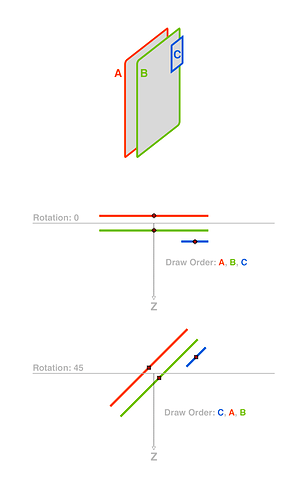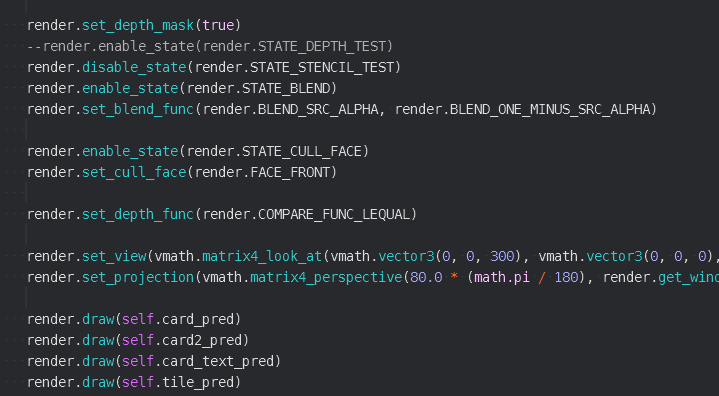Hello!
I think the issue boils down to how draw order is calculated inside the engine; based on Z position for the component. I tried to draw an image to explain it as simple as I can for this situation:
- First image shows a basic setup of 3 gameobjects+sprites, shown sideways here to illustrate how they “layer” on top of each other. (They all have a different Z position indicated by the spacing between them.)
- The second image show you the same setup from above, Z axis pointing towards the eye/camera. Here the draw order is as expected, back to front; A, B, C.
- In the third image, the parent object has been rotated by 45 degrees. This means each gameobject (indicated by the small red/black dot/cross) will have a different world position than before… Now focus just on the Z value, which is used by the engine to determine in what order the gameobjects/components should be drawn. As you can see the Z value for C is less than both A and B, meaning it will be drawn first.
Sorry for the quick and dirty image, but hopefully it clears up some confusion. 
But back to actually trying to solve your issue… We discussed a couple of different approaches , but I think the quickest way might be to do something similar to what I described in this post: The label component blink when rotation GO over Y axes (SOLVED)
It should work for orthographic projection as well, as far as I know.



